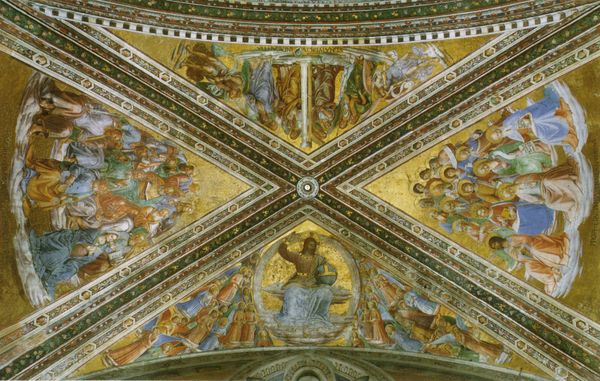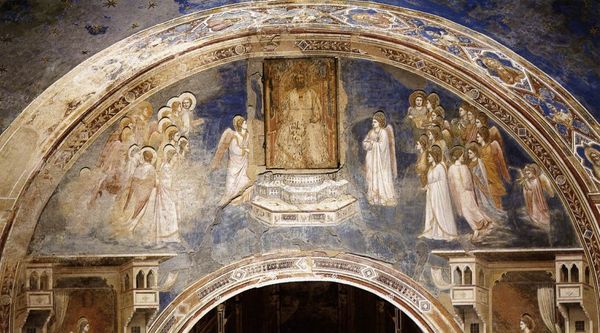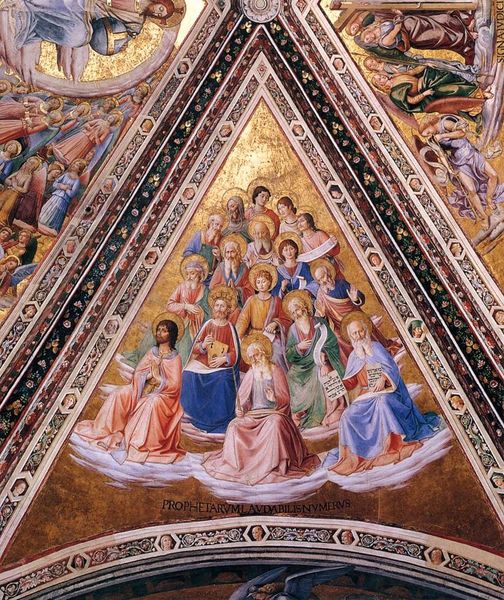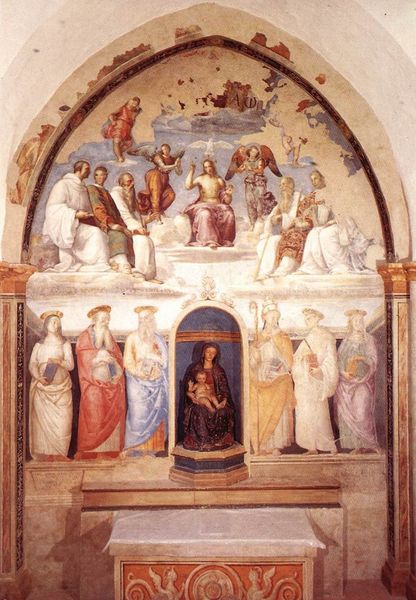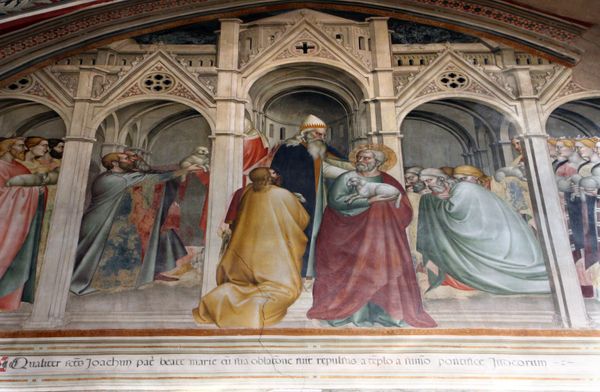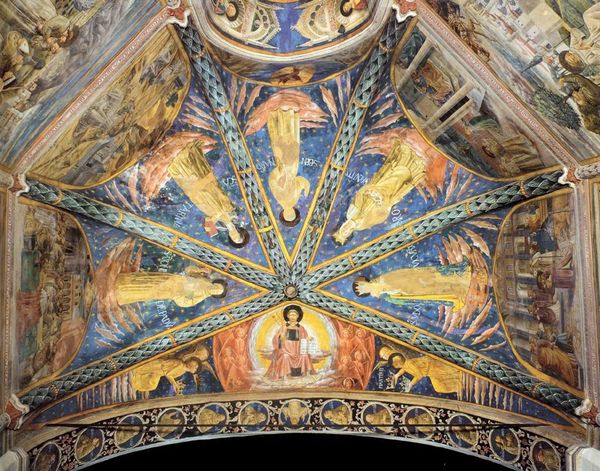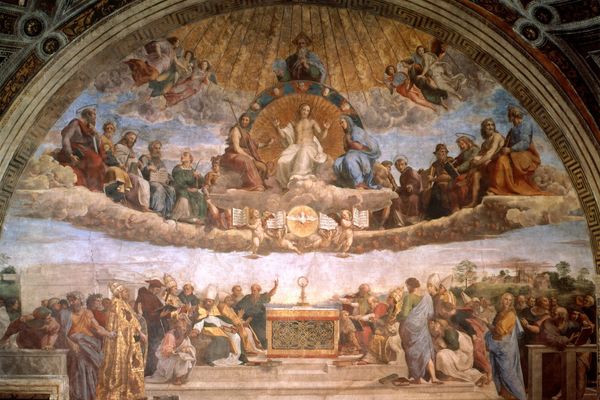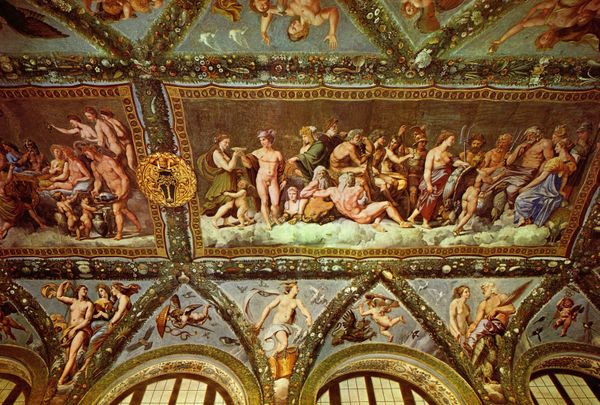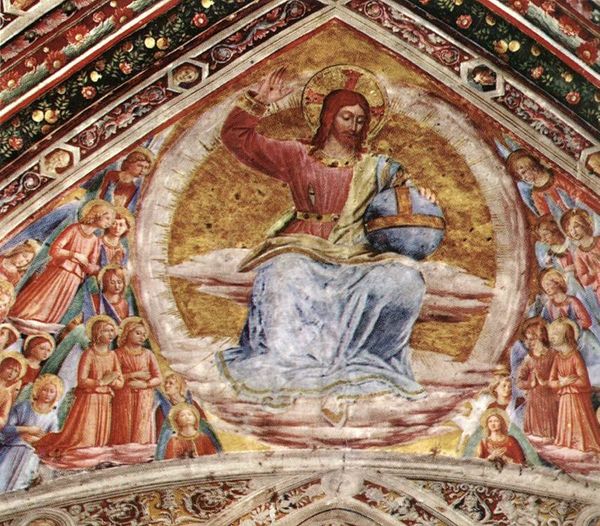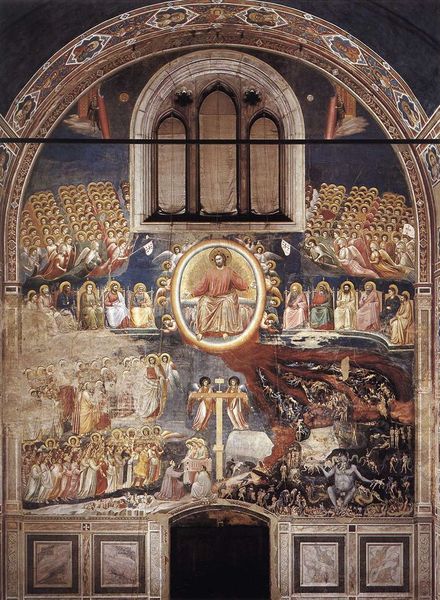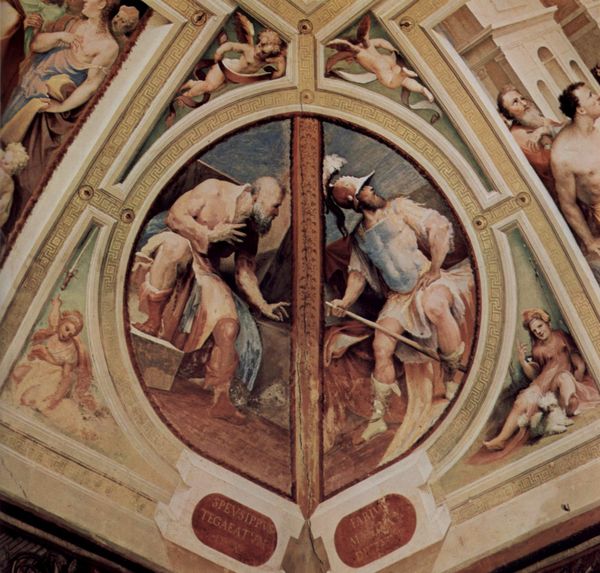
painting, fresco, architecture
#
narrative-art
#
painting
#
sculpture
#
holy-places
#
figuration
#
historic architecture
#
fresco
#
11_renaissance
#
traditional architecture
#
oil painting
#
arch
#
christianity
#
history-painting
#
italian-renaissance
#
virgin-mary
#
architecture
#
historical building
#
statue
#
christ
Copyright: Public domain
Curator: So, we’re looking at Domenico Ghirlandaio's "Coronation of the Virgin," a fresco painted around 1490 and still in situ at Santa Maria Novella, Florence. Editor: Whoa. Talk about an impressive heavenly court. It looks almost like a tapestry woven with saints and angels, and at the very top, a real moment of pure love. It feels intimate, almost. Curator: It's certainly designed to impress! The "Coronation" captures a pivotal moment in Christian iconography: the Virgin Mary’s ascension to Queen of Heaven. You see Christ crowning her? It's full of Renaissance symbolism but, really, it’s a product of its cultural environment. The opulent colors, the sheer number of figures... it speaks of power, doesn't it? The church showcasing its prominence. Editor: Totally, there’s that regal feel but I get the sense he’s going beyond the institution’s showiness here. Like, check out how each saint is doing his own thing, having a silent discussion, almost forming sub-narratives, I think Ghirlandaio captures humanity inside all that pomp. What do you reckon? Curator: He’s certainly trying to inject a sense of relatable humanity. One has to consider the patronage here; this wasn't simply artistic expression in a vacuum. This work was commissioned and created within a precise set of religious and political expectations, so its message needed to serve particular agendas. Editor: Agendas… even those Renaissance masters worked with a touch of human struggle behind them, don’t you think? To inject just a bit of personal emotion into those massive walls? But that´s probably why this scene, beyond the grandeur of this moment, still gives me such peace. Curator: Indeed, perhaps in the interplay of grand spectacle and relatable human form we glimpse the Renaissance ambition, this drive to bring divinity closer to human experience. Editor: A bit of humanity inside those majestic displays—nice observation. Really lets you see those frescoes in a new way. Curator: Yes. That combination allows us a complex understanding of not just art history, but cultural history writ large.
Comments
No comments
Be the first to comment and join the conversation on the ultimate creative platform.
